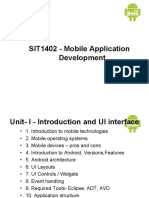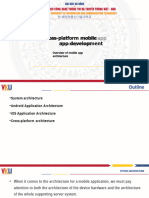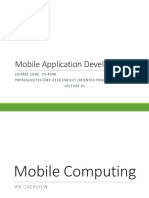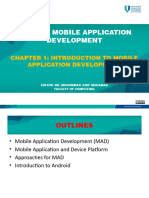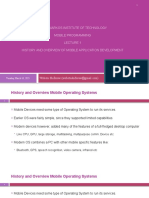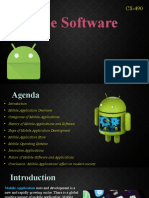0% found this document useful (0 votes)
47 views2 pagesHistory of Mobile Software Development
The document outlines the evolution of mobile software development from basic communication tools in the pre-1990s to the smartphone revolution initiated by the iPhone and Android in the late 2000s. It highlights the rise of app ecosystems, modern development trends such as cross-platform solutions and cloud integration, and the ongoing impact of mobile software on various sectors. The future of mobile development is characterized by advancements in technology, including 5G, wearables, and AR/VR.
Uploaded by
cocsit21Copyright
© © All Rights Reserved
We take content rights seriously. If you suspect this is your content, claim it here.
Available Formats
Download as DOCX, PDF, TXT or read online on Scribd
0% found this document useful (0 votes)
47 views2 pagesHistory of Mobile Software Development
The document outlines the evolution of mobile software development from basic communication tools in the pre-1990s to the smartphone revolution initiated by the iPhone and Android in the late 2000s. It highlights the rise of app ecosystems, modern development trends such as cross-platform solutions and cloud integration, and the ongoing impact of mobile software on various sectors. The future of mobile development is characterized by advancements in technology, including 5G, wearables, and AR/VR.
Uploaded by
cocsit21Copyright
© © All Rights Reserved
We take content rights seriously. If you suspect this is your content, claim it here.
Available Formats
Download as DOCX, PDF, TXT or read online on Scribd
/ 2




